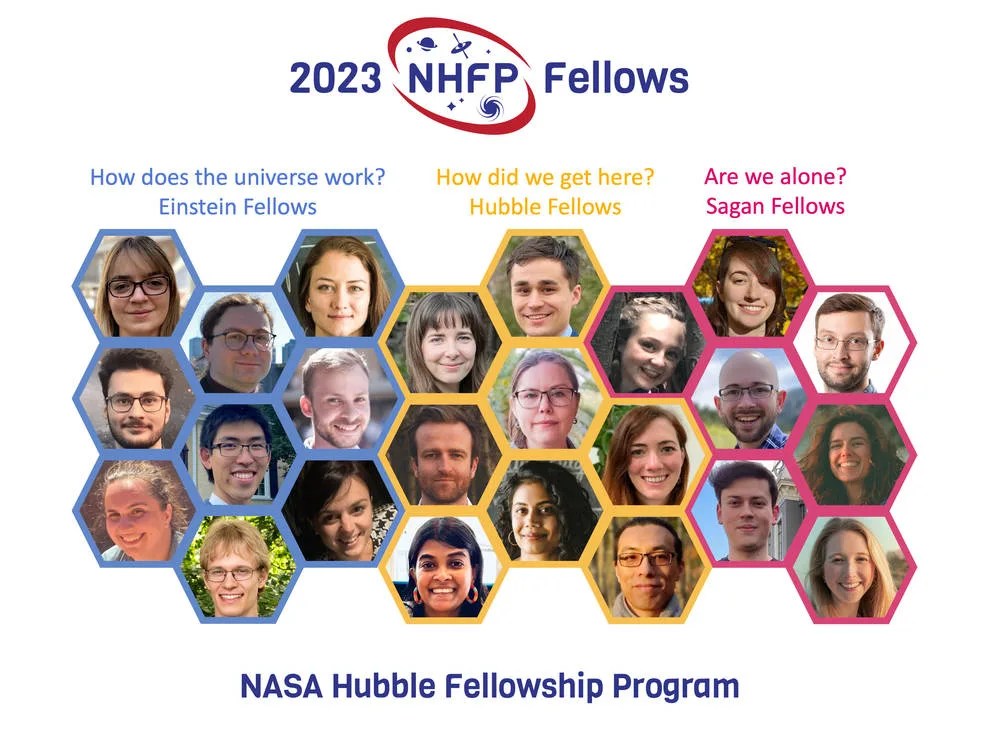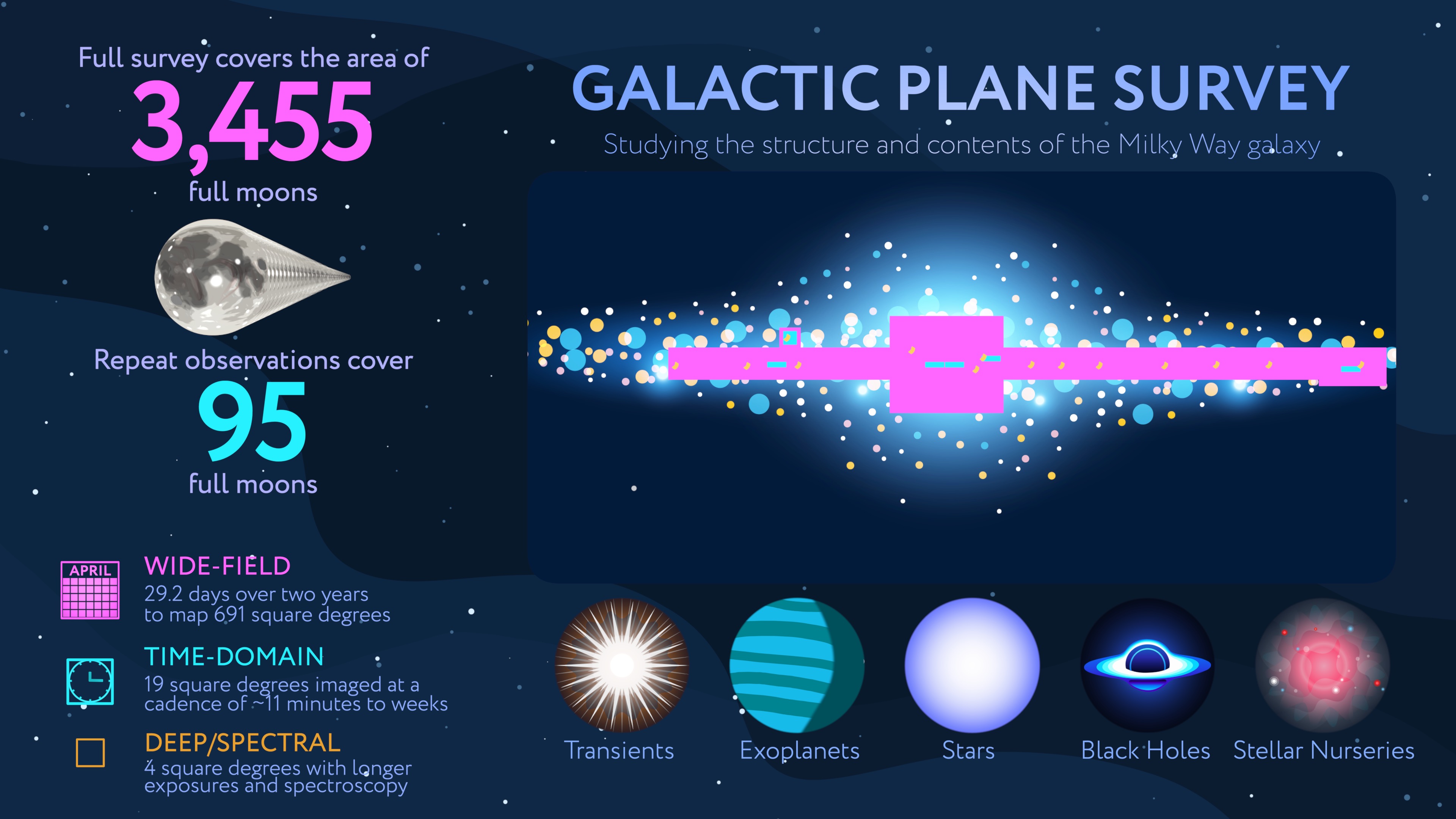NASA has selected 24 new Fellows for its prestigious NASA Hubble Fellowship Program (NHFP). The NHFP is one of the highlights of NASA's pursuit of excellence in astrophysics. The program enables outstanding postdoctoral scientists to pursue independent research in any area of NASA Astrophysics, using theory, observations, simulations, experimentation, or instrument development. Over 450 applicants vied for the 2023 fellowships. Each fellowship provides the awardee up to three years of support.
Once selected, fellows are named to one of three sub-categories corresponding to three broad scientific questions that NASA seeks to answer about the universe:
- How does the universe work? – Einstein
- Fellows How did we get here? – Hubble Fellows
- Are we alone? – Sagan Fellows
"Congratulations to this year’s Fellows, who have all proposed inspiring research programs that speak to the excitement and opportunity of this era in astrophysics," said Mark Clampin, director of the Astrophysics Division at NASA Headquarters in Washington. "I look forward to seeing their discoveries shape our knowledge of the universe."
The newly selected NHFP Fellows will begin their programs in the fall of 2023 at a university or research center of their choosing in the United States. The list below provides the names of the 2023 awardees, their fellowship host institutions, and their proposed research topics.

2023 NASA Hubble Fellowship Program:
How does the universe work? – Einstein Fellows:
- Andrea Sylvia Biscoveanu, Northwestern University, From Black Holes to the Big Bang: Astrophysics and Cosmology With Gravitational Waves and Their Electromagnetic Counterparts
- Andrei Cuceu, Ohio State University, Precision Cosmology From Lyman-alpha Forest Correlations in DESI Data
- Kristen Dage, Wayne State University, Hunting for Accreting Black Holes in Young Massive Clusters
- Peter Kosec, Smithsonian Astrophysical Observatory, Leveraging the Line of Sight to Understand the Physics of Accretion Disk Winds
- Calvin Leung, University of California, Berkeley, Instrumentation & FRB Cosmology With CHIME Outriggers
- Matthew Liska, University of Colorado, Boulder, Unraveling the Mysteries Behind Spectral State Transitions
- Lia Medeiros, Princeton University, Ushering in a New Era of the EHT With Machine Learning
- Justin Pierel, Space Telescope Science Institute, Leveraging HST for a New Era of Precision NIR SN Ia Cosmology
- Maria Vincenzi, Duke University, SN Cosmology With the Next Generation of Experiments
How did we get here? – Hubble Fellows:
- Iryna Butsky, Stanford University, What in the Galaxy Is Scattering Cosmic Rays?
- Tim Cunningham, Harvard University, White Dwarfs in 3D: Lenses Into Distant Worlds
- Thavisha Dharmawardena, New York University, Towards a Comprehensive 3D View of Dust in the Galactic Neighborhood
- Nicholas Kern, Massachusetts Institute of Technology, Towards a Robust, Multi-Wavelength View of Cosmic Dawn: New Bayesian Tools for a Systematics-Robust 21-cm Signal Detection and Cross-Correlation
- Cassandra Lochhaas, Smithsonian Astrophysical Observatory, Non-Equilibrium Galaxy Evolution Driven by the CGM
- Ekta Patel, University of Utah, Reconstructing the Assembly History of Andromeda
- Katherine (Wren) Suess, Stanford University, Revealing and Resolving Quenching with the James Webb Space Telescope
- Jiayi Sun, Princeton University, Star Clusters, Molecular Clouds, and Galaxies — Linking Physics From Parsec to Megaparsec Scales
Are we alone? – Sagan Fellows:
- Danica Adams, Harvard University, Using Chemical Kinetics to Constrain the Timeline of Mars' Redox Dichotomy
- Adina Feinstein, University of Colorado, Boulder, The Evolution of Young Exoplanet Atmospheres in the Presence of Extreme Stellar Activity
- Ward Howard, Southwest Research Institute, Fantastic Flares and Where to Find Them: Constraining Exoplanet Atmospheres With Multi-wavelength Flare Campaigns
- Andrés Izquierdo, University of Florida, Mining the Kinematics of Discs to Hunt Planets in Formation
- Charles Law, University of Virginia, Revealing the Chemistry of Typical Planet-Forming Disks
- Jessica Spake, California Institute of Technology, Using Exoplanet Tails to Measure Stellar and Planetary Mass Loss Rates
- Margaret (Maggie) Thompson, Carnegie Institution for Science's Earth and Planets Laboratory, To Explore Strange New Worlds: Connecting the Interiors and Atmospheres of Rocky Exoplanets
An important part of the NHFP is the annual Symposium, which allow Fellows the opportunity to present results of their research, and to meet each other and the scientific and administrative staff who manage the program. A lively and very successful hybrid symposium was held at the Space Telescope Science Institute in Baltimore, Maryland in the fall of 2022, which included a session in which the fellows discussed their scientific research and plans to increase diversity, equity, and inclusion in the NHFP, as well as participated in a career panel.
The Space Telescope Science Institute administers the NHFP on behalf of NASA, in collaboration with the Chandra X-ray Center at the Smithsonian Astrophysical Observatory in Cambridge, Massachusetts, and the NASA Exoplanet Science Institute at Caltech/IPAC in Pasadena, California.
Short bios and photos of the 2023 NHFP Fellows can be found at:
https://www.stsci.edu/stsci-research/fellowships/nasa-hubble-fellowship-program/2023-nhfp-fellows
Media Contacts:
Claire Andreoli
NASA's Goddard Space Flight Center, Greenbelt, MD
claire.andreoli@nasa.gov
Cheryl Gundy
Space Telescope Science Institute, Baltimore, MD
































